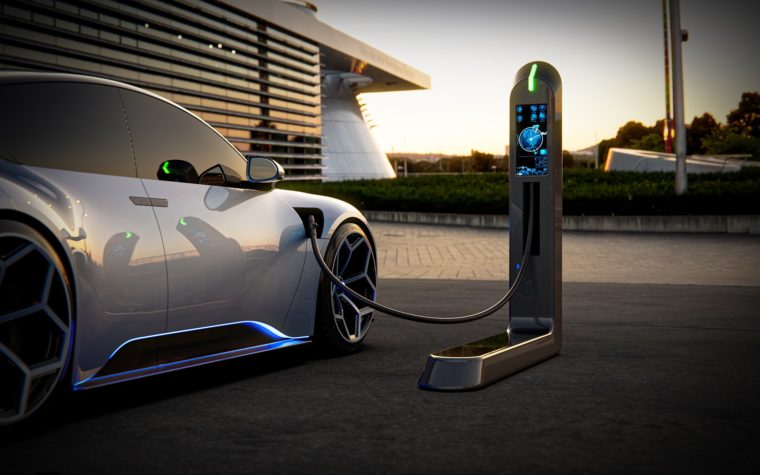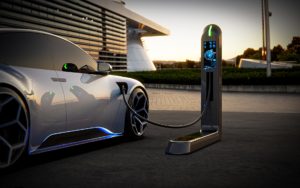
A deadline is looming for an important announcement by the federal government. On September 30, state leaders throughout the country will learn whether or not their electric vehicle infrastructure plans were approved. If the news is good, funding will be immediately available for planned projects. If the news is bad, those state officials will go back to drawing boards and try again to draft a plan that can be approved.
The Federal Highway Administration must approve each state’s plan for EV infrastructure before funding from the National Electric Vehicle Infrastructure (NEVI) Formula Program is released. The agency’s approval is the final barrier between state departments of transportation (DOTs) and a cumulative $5 billion for EV charging infrastructure.
The funding will flow to state DOTs over the next five years and the agencies will then strategically oversee the deployment of EV charging infrastructure. Projects funded will be launched along pre-approved alternative fuel corridors.
In Texas, the Department of Transportation (TxDOT) expects to receive at least $408 million for EV infrastructure projects over the next five years. In 2023, TxDOT will allocate approximately $46 million to install chargers at 55 different sites along the state’s alternative fuel corridors. Once TxDOT addresses EV charging needs along those corridors, the agency will allocate funding for more projects. The agency will make sure that the funding is distributed equitably across urban and rural communities. Once the Texas plan is approved, TxDOT will rush to publish solicitations for the work. If the state receives approval for the funding on September 30, the solicitations could be released as early as October 1, 2022.
The primary focus of most states will be to install EV charging stations where there are gaps of more than 50 miles between existing charging stations. However, Montana, and a few other states, will first focus on closing gaps of more than 100 miles. At least $43 million will be available to Montana’s five alternative fuel corridors. The state’s corridors include Interstate 15, Interstate 90, Interstate 94, U.S. Highway 93, and U.S. Highway 2. Installation of charging stations for at least ten sites is scheduled to begin in 2023.
North Dakota will receive $26 million in NEVI Formula funds along with a state match of $6.4 million, which will bring the state’s budget for EV deployment up to $32.4 million over the next five years. Once the state plan is approved, officials plan to contract with partners for EV infrastructure deployment through design-build-maintain-operate engagements. The contracting phase will take place in 2023 and construction will begin on eighteen EV charging stations along the state’s two alternative fuel corridors—Interstates 94 and 29.
The Indiana Department of Transportation (INDOT) is also exploring public-private partnership (P3) engagements as a way of delivering statewide EV infrastructure. The state will soon receive about $100 million in NEVI funding to install 61 EV charging stations along the state’s ten designated alternative fuel corridors. Procurement will begin in 2023 and it appears that INDOT will use a combination of design-build-operate-maintain and design-build-operate-maintain-finance contracting methods.
The release of NEVI funding is a source of major activity for EV infrastructure along prominent transportation corridors, but it is by no means the only source of funding for these projects.
City and county governments across the nation are also releasing public funds to address EV charging needs–not only for local citizens but also for recently electrified municipal fleets.
In the city of Cypress, California, local leaders recently approved the preliminary design for a new municipal parking structure that will feature accessible EV charging stations for public use. The city will invest $20 million in the project and the charging stations should be operational by 2025.
The city of San Diego also plans to financially support local EV charging infrastructure as more of municipal fleets become electrified. The city has a 15-year plan to electrify 975 municipal vehicles, despite only having 46 EV charging stations currently. To cover what will soon become a glaring gap in EV infrastructure, officials will secure $22.1 million for 60 new EV charging stations.
The town of Superior, Colorado will allocate a combined $800,000 to support installation of EV chargers across a range of local public facilities. Work is slated to begin in 2023 and plans are in place to install EV charging stations near one of the town’s prominent multi-use trails and in other areas. In 2024, EV charging stations will be installed in the downtown area.
In the state of New York, development of EV charging infrastructure is emerging at the county level. Officials in Suffolk County will invest $9 million to install EV charging equipment, provide alterations to several parking facilities, make electrical upgrades, and initiate other work required to support county fleet electrification goals. The county also is designing a multi-modal hub that will bring EV charging infrastructure into a nerve center. An allocation of $1 million will fund design work for that project.
Rhode Island received one of the smaller allocations of $22.9 million. That is likely because the state has only one designated alternative fuel corridor, Interstate 95. But, $3.8 million is available this year to launch the infrastructure initiative and the state plans to begin work to install EV fast chargers at existing park n’ ride facilities. The state will allocate another $6.6 million of NEVI funding to support building out EV charging stations along Rhode Island’s Atlantic coastline.
With the imminent release of NEVI funding along with other local funding allocations, there will be no shortage of opportunities for firms interested in helping with this nationwide initiative. The increased need for even more EV infrastructure over the next decade will almost certainly spur additional funding. The upcoming announcement related to funding approval will signal regions where activity will begin immediately.

